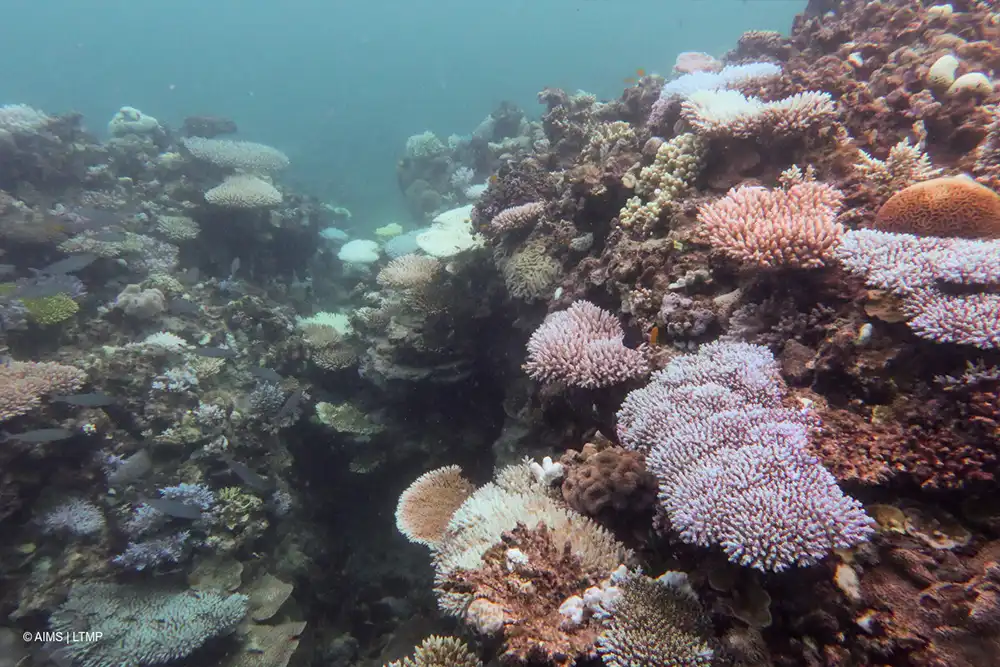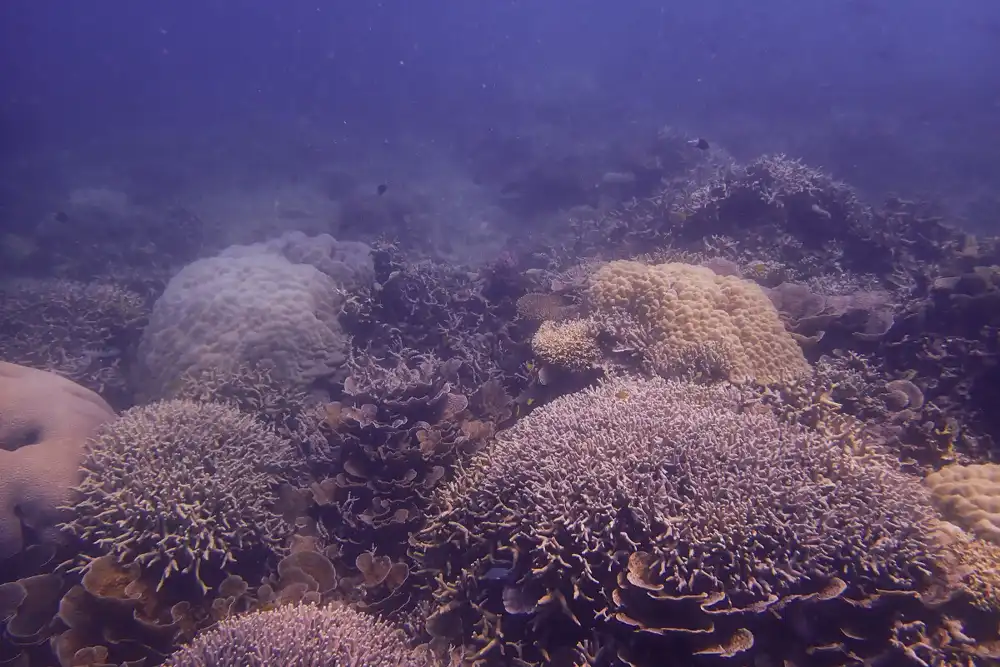
AIMS 2023-24 monitoring report finds Great Barrier Reef coral cover has increased – but surveys were done before mass bleaching and cyclones struck
The latest annual report from the Australian Institute of Marine Science (AIMS) has found that average hard coral cover increased and remained high across the full extent of the Great Barrier Reef.
Scientists are urging caution over the good news, however, as many of the surveys were conducted prior to this year’s mass coral bleaching event, and two tropical cyclones which struck the Central part of the reef during the Austral Summer.
The data recorded during this year’s Long-Term Monitoring Program (LTMP) surveys represent the highest level of coral cover on record since AIMS began monitoring the Great Barrier Reef, in 1985. The 2024 increase continues the GBR’s remarkable recovery, as recorded in 2022, despite a series of damaging mass coral bleaching events.

Unfortunately, the impact of this year’s mass bleaching event – the fifth since 2016 – has yet to be determined. 67 per cent of the surveys in this year’s report were conducted before the onset of the bleaching in March. 55 per cent of the surveys were also conducted before the two tropical cyclones struck the Central GBR in December 2023 and January 24, both of which caused widescale flooding and damage to the reefs they impacted.
The scale of this year’s bleaching event has also raised concern among AIMS researchers. According to the LTMP report, the 2024 bevent had the ‘largest spatial extent of bleaching recorded to date,’ and occurred across the Northern, Central and Southern sections of the reef. 46 per cent of all reefs were exposed to the highest level of heat stress ever recorded, particularly along the Southern part of the GBR.
Both the Northern and Central sections of the Great Barrier Reef reached record-high levels of coral cover since the long-term monitoring project began in 1985, increasing from 35.8 per cent cover in 2023 to 39.5 per cent cover in the north; and 34 per cent, up from 30.7 per cent in central regions.
The Southern section, which AIMS says has been the most dynamic over the years in terms of its coral extent, was measured at 39.1 per cent, the highest level of cover since 1993 and a 5.1 per cent increase over 2023 levels.



‘We saw evidence of early onset mortality, particularly in the Southern region, but the full picture of mortality was not yet apparent during this year’s surveys,’ said AIMS’ LTMP leader, Dr Mike Emslie. ‘While bleached corals are very stressed, they are still alive and are recorded as live coral on our surveys.
‘Some types of corals can remain bleached for months, remaining on a knife edge between survival and death,’ added Dr Emslie. ‘This is why returning and repeating surveys of the reefs in this vast, complex and dynamic system is so important. This year’s results serve as a very important reference against which to measure the impacts of the summer’s events.’
Damage from Tropical Cyclone Jasper – which originated as a Category 5 storm in the Coral Sea during December 2023, but had diminished to a Cat 2 cyclone by the time it struck the reef – and Cyclone Kirrily – a Cat 3 storm which hit the reef in January 2024 – has yet to be fully assessed.
The scientists have found evidence suggesting that storm damage had reduced hard coral cover by between 6 and 10 per cent in some reefs, whereas others remained relatively unscathed.

Crown-of-Thorns starfish infestations have also caused significant damage to the GBR in the past year, especially across its southern reefs.
AIMS Research Program Director Dr David Wachenfeld said the regional increases in coral cover were encouraging, highlighting the Reef’s resilience and ability to recover after huge losses in coral cover between 2011 and 2015.
‘In many ways the Reef has had some lucky escapes in recent years,’ said AIMS Research Program Director Dr David Wachenfeld. ‘The 2020 and 2022 mass bleaching events had levels of heat stress that were not as intense as the 2016 and 2017 events or the 2024 event.
‘Coupled with very few other events causing widespread coral death, that has led to the levels of coral cover increase we have seen,’ he added, ‘but the frequency and intensity of bleaching events is unprecedented, and that is only forecast to escalate under climate change, alongside the persistent threat of crown-of-thorns starfish outbreaks and tropical cyclones.’

While AIMS scientists continue to assess the impact of the recent heat stress and storm damage, aerial surveys undertaken by AIMS and the Great Barrier Reef Marine Park Authority in February and March found bleached corals in the shallows of 73 per cent of reefs surveyed across all three regions.
In the weeks leading up to the publication of the latest LTMP report, AIMS scientists say they have observed ‘substantial mortality’ in reefs that were badly hit by the 2024 bleaching event.
‘We are only one large-scale disturbance event away from a reversal of the recent recovery,’ said Dr Wachenfeld ‘The 2024 bleaching event could be that event – almost half of the 3000 or so reefs that make up the marine park experienced more heat stress than ever recorded.
‘We still don’t know how much mortality this event has caused. Our monitoring over the next 12 months will help us to understand how this bleaching event stacks up against the others in the last decade.’
Related articles
- New ‘Word on the Reef’ podcast dives into stories from the Great Barrier Reef
- Fifth Great Barrier Reef mass bleaching since 2016
- Great Barrier Reef coral recovery pauses
- Highest Great Barrier Reef coral cover in 36 years
- Great Barrier Reef hit by fourth mass bleaching in seven years
- Dylan Harrison instructor ‘permanently suspended’ - 21 October 2025
- Lookout failure and improper DSMB use caused Scapa diver’s death – MAIB - 18 October 2025
- Dive computer data ‘lost’ following death of 12-year-old Dylan Harrison - 17 October 2025


